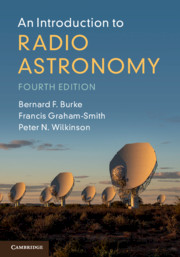Book contents
- Frontmatter
- Dedication
- Contents
- Preface
- Part I The Emission, Propagation, and Detection of Radio Waves
- Part II Radio Telescopes and Aperture Synthesis
- Part III The Radio Cosmos
- Appendix 1 Fourier Transforms
- Appendix 2 Celestial Coordinates and Time
- Appendix 3 Digitization
- Appendix 4 Calibrating Polarimeters
- Appendix 5 Spherical Harmonics
- References
- Index
- References
References
Published online by Cambridge University Press: 06 August 2019
- Frontmatter
- Dedication
- Contents
- Preface
- Part I The Emission, Propagation, and Detection of Radio Waves
- Part II Radio Telescopes and Aperture Synthesis
- Part III The Radio Cosmos
- Appendix 1 Fourier Transforms
- Appendix 2 Celestial Coordinates and Time
- Appendix 3 Digitization
- Appendix 4 Calibrating Polarimeters
- Appendix 5 Spherical Harmonics
- References
- Index
- References
- Type
- Chapter
- Information
- An Introduction to Radio Astronomy , pp. 493 - 516Publisher: Cambridge University PressPrint publication year: 2019



